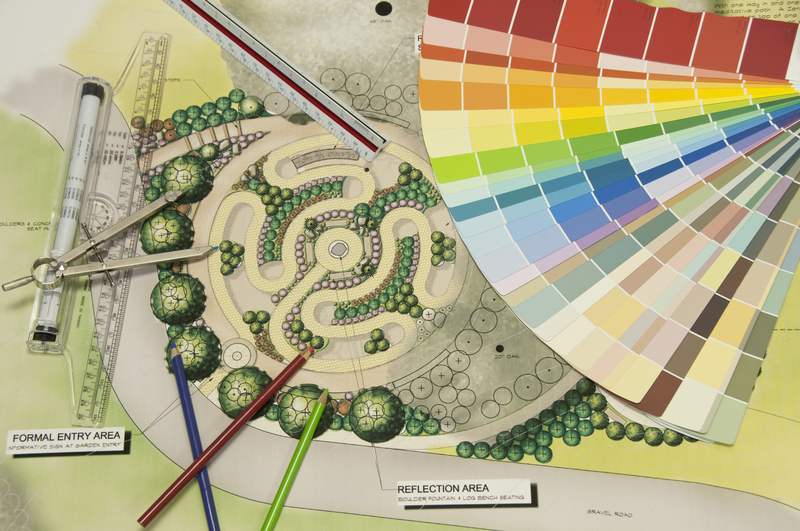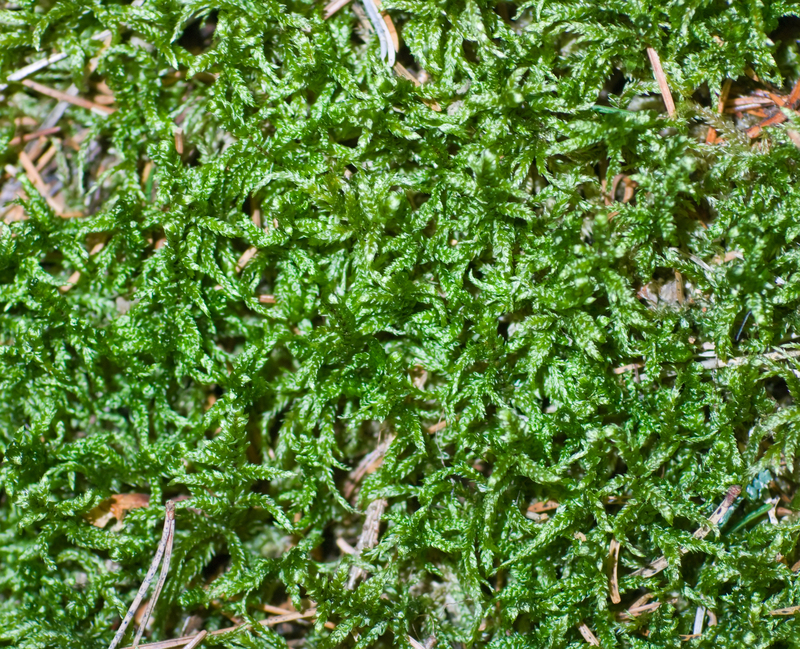Garden for the Globe: Addressing Climate Change Through Cultivation
Posted on 26/06/2025
Garden for the Globe: Addressing Climate Change Through Cultivation
The global climate crisis demands action on every scale. Every garden, big or small, can be a tool for planetary healing. In this comprehensive guide, we explore how gardening for the globe--through intentional, climate-smart cultivation--offers hope, resilience, and meaningful solutions for a sustainable future.

Why Garden for the Globe? The Climate Change Connection
Climate change is escalating, intensified by deforestation, greenhouse gas emissions, and the degradation of natural habitats. Many individuals wonder: What can I do to help solve the climate crisis? Among the practical and powerful actions available, gardening for the globe--transforming your gardening practices to support the planet--stands out for its impact and accessibility.
- Plants absorb carbon dioxide (CO2): Through photosynthesis, plants sequester atmospheric carbon, a leading greenhouse gas, thereby working as natural climate regulators.
- Gardens restore biodiversity: Climate-smart gardens support native species, pollinators, and soil microbes, rebuilding crucial ecosystems and strengthening their resilience against climate change.
- Urban gardening reduces heat: Green spaces lower local temperatures, reverse the urban "heat island" effect, and improve air quality, making cities more livable.
- Food gardens reduce emissions: Growing food locally slashes the carbon footprint of production, packaging, and transportation.
By cultivating your garden for the globe, you create a local solution with global impact. The next sections reveal how every gardener can become a climate champion.
The Principles of Climate-Smart Gardening
1. Choose Climate-Resilient and Native Plants
Climate-resilient gardening means selecting plant species that are adapted to current and future climate conditions. Native plants, in particular, require less water, fertilizer, and maintenance while supporting local wildlife and biodiversity.
- Assess your region's future climate: Research projections for your area, including temperature changes, rainfall variability, and pests.
- Opt for natives: Native wildflowers, grasses, shrubs, and trees will thrive in your soil, reducing the need for chemical interventions.
- Embrace diversity: Plant a mix of species to buffer against unpredictable weather and pest outbreaks--a "polyculture" is more resilient than a monoculture.
2. Use Regenerative Soil Practices
Healthy soil is the literal foundation of climate-conscious gardening. Soils store three times more carbon than the atmosphere, making soil stewardship an essential strategy in the fight against climate change.
- Compost: Transform food scraps and yard waste into nutrient-rich compost. Composting diverts methane-producing waste from landfills and helps lock carbon into the soil.
- Mulch: Apply layers of organic mulch (like straw, leaves, or wood chips) to retain moisture, suppress weeds, and slowly release nutrients. Mulching also protects soil from erosion and temperature extremes.
- No-till or low-till gardening: Minimizing soil disruption preserves soil structure, microorganisms, and carbon stocks.
- Plant cover crops: Sowing cover crops in fallow periods adds organic matter, fixes nitrogen, and protects the soil from compaction and runoff.
3. Water Wisely
Water scarcity is a growing threat due to global warming. By gardening for the globe with water efficiency in mind, you conserve resources and reduce your environmental impact.
- Harvest rainwater: Collecting rainwater in barrels helps irrigate your garden during dry spells, reducing dependence on municipal water systems.
- Choose drought-tolerant plants: Select varieties that require little supplemental water.
- Install drip irrigation: Drip systems deliver water directly to roots, minimizing loss from evaporation and runoff compared to sprinklers.
- Water in the early morning or evening: Cooler temperatures reduce evaporation rates, so your garden absorbs more moisture.
4. Support Pollinator and Wildlife Habitat
Bees, butterflies, birds, bats, and other creatures are threatened by climate change and habitat loss. By incorporating their needs into your global gardening strategy, you help sustain the food web and ecosystem services needed for climate resilience.
- Plant pollinator gardens: Include nectar- and pollen-rich flowers, especially natives.
- Create shelters: Deadwood, dense hedges, and water sources provide refuge and resources for wildlife.
- Avoid pesticides: Chemicals can eliminate the very species that keep your garden healthy.
How Food Gardens Help the Climate
One of the most tangible ways to make a difference is by cultivating your own food. Changing how we grow and consume food is central to fighting climate change. Here's why:
- Reducing transport emissions: The average meal travels more than 1,500 miles from farm to plate. Growing your own drastically cuts that distance--and your carbon footprint.
- Avoiding industrial agriculture: Large-scale monoculture relies on fossil fuels for plowing, fertilizing, and pesticide application, while often degrading soil and water. Small, organic gardens can actually restore the land.
- Preserving food waste: Homegrown food gives you control over how much you grow and harvest, which means less food thrown away (and fewer emissions from rotting organics in landfills).
- Using climate-reducing techniques: Techniques like permaculture, agroforestry, and biointensive mini-farming can sequester carbon and foster biodiversity.
Climate-Smart Urban Gardening: Greening Our Cities
Climate change is an urban phenomenon. Cities account for more than 70% of global CO2 emissions, and poor urban planning exacerbates climate risk through loss of green space, oceanic heat absorption, and lack of biodiversity.
Climate-friendly urban gardening doesn't require vast land. Rooftop gardens, balcony planters, and community green spaces cool cities, filter air pollutants, reduce stormwater runoff, and promote community wellbeing. Methods include:
- Vertical gardening: Maximizing greenery in limited space, vertical gardens insulate buildings and provide habitat for pollinators.
- Community gardens: Shared spaces build social bonds, support local food networks, and educate citizens about sustainable living.
- Native species in urban spaces: Parks, medians, and green corridors planted with natives offer an oasis for birds and insects--bolstering biodiversity in the city.
The Role of Trees: Urban and Rural Reforestation
Trees are the planet's lungs. One mature tree can absorb up to 22 kg of CO2 annually. Integrating tree planting into gardening for the planet not only mitigates climate change but also provides shade, reduces heat, and prevents soil erosion.
- Plant the right tree in the right place: Native, climate-resilient trees thrive with less maintenance and provide more ecosystem benefits.
- Restore degraded land with agroforestry: Blending agriculture and trees boosts biodiversity, improves soil fertility, and diversifies farmers' incomes.
- Participate in reforestation drives: Get involved in larger efforts to replant forests and rejuvenate urban tree cover.
Gardening Practices to Avoid: Minimizing Harm to the Climate
- Avoid synthetic fertilizers and pesticides. Most are produced via energy-intensive processes and release nitrous oxide, a potent greenhouse gas.
- Refrain from excessive tilling. Excess tillage destroys soil structure, releases stored carbon, and weakens soil resilience.
- Sparingly use lawn areas. Lawns often require frequent mowing, fertilizers, and water. Replace with meadow, pollinator garden, or edible landscaping options.
- Choose manual tools over gas-powered equipment. Leaf blowers and lawnmowers burning gasoline emit surprising amounts of greenhouse gases.
Community, Policy, and Education: Scaling Up the Impact
Cultivating gardens for the globe goes beyond your backyard. Community action, education, and advocacy are crucial for wider climate change solutions. Here's how you can amplify your impact:
- Join or start a local gardening initiative: Urban farms, seed-saving exchanges, or tree-planting groups multiply your efforts and foster knowledge-sharing.
- Advocate for green policies: Support zoning changes, incentives for sustainable landscaping, urban composting programs, and green infrastructure projects in your community.
- Share climate gardening knowledge: Host workshops at schools, libraries, or online to inspire others to join the movement.
- Support regenerative agriculture: Choose food grown using climate-smart and organic practices, or connect with local farmers dedicated to sustainability.
Success Stories: Gardens Making a Difference Globally
- The Great Green Wall, Africa: This ambitious project aims to plant over 8,000 km of trees across the Sahel to halt desertification, improve food security, and foster millions of sustainable livelihoods.
- Cuba's Urban Organic Farming: Following a farming crisis, Havana transformed vacant lots into organic gardens, producing masses of healthy food and creating green jobs--cutting fertilizer and fossil fuel use.
- Homegrown National Park, USA: Conservationists encourage suburban and urban landowners to transform lawns into native-plant habitats, aiming to restore 20 million acres and support endangered pollinators.
- Victory Gardens 2.0: All over the world, people are rediscovering victory gardening--producing food at home as an act of climate resilience and community strength.

How to Start Your Own Garden for the Globe
-
Assess your site:
- Observe sunlight, soil type, drainage, and space available.
-
Set goals:
- Food production? Pollinator support? Urban cooling? Biodiversity?
-
Research climate-adapted plants:
- Contact local extension services or native plant societies for lists.
-
Improve your soil organically:
- Add compost, switch to no-till methods, avoid chemicals.
-
Install water-saving methods:
- Add mulch, collect rainwater, and use drip irrigation if possible.
-
Invite wildlife:
- Provide food, water, and habitat for beneficial insects and birds.
-
Share and expand:
- Share seeds, surplus produce, and climate wisdom within your community.
Conclusion: Every Garden Counts
As our planet faces unprecedented environmental challenges, gardening for the globe represents a powerful grassroots solution. Beyond aesthetics or personal sustenance, gardens become places of healing, renewal, and climate action.
By cultivating with intention, each of us can help slow climate change, restore biodiversity, and ensure a healthy Earth for generations to come. Whether you have a windowsill or a wide field, your efforts literally and figuratively plant the seeds of global change.
Now is the time to garden not just for beauty or bounty, but for the globe.

